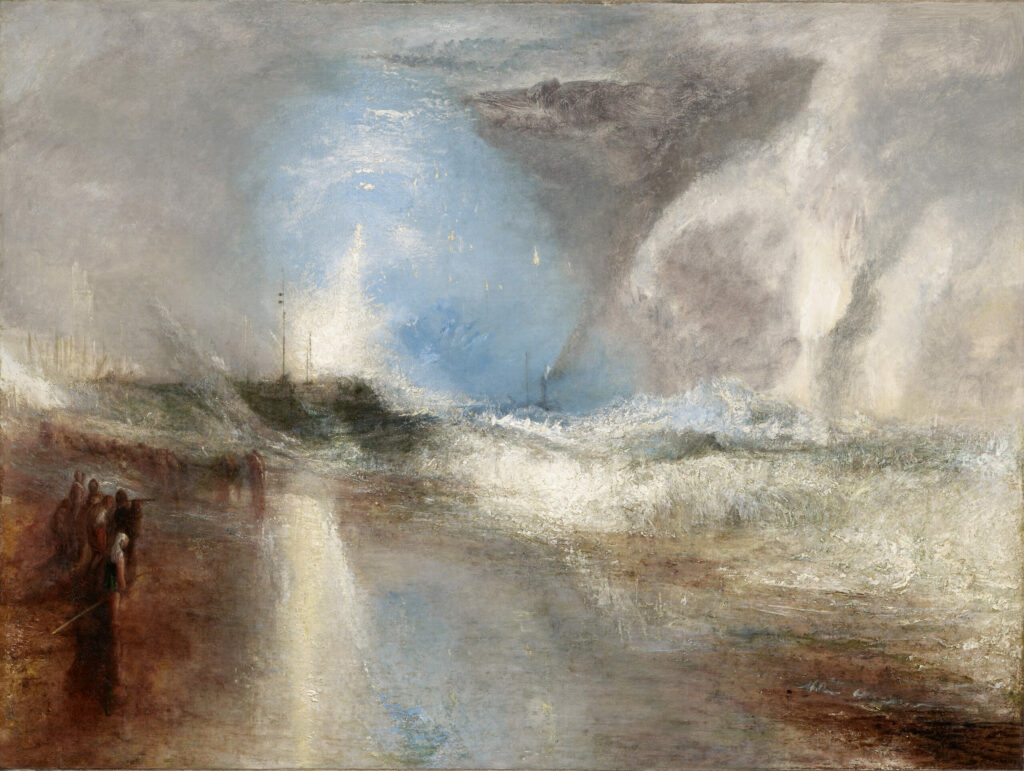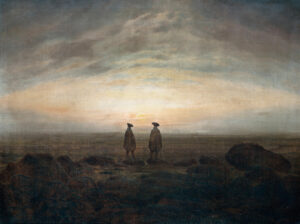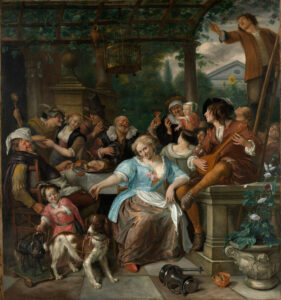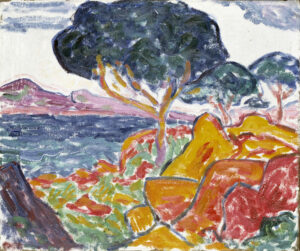
In this striking work of maturity, Turner surpasses simple representation to plunge us into the heart of a maritime drama of great intensity.
The unleashed elements seem to literally explode on the canvas: flares pierce the mist like shooting stars, while the waves blend with opaline clouds in a chromatic whirlwind.
The English master’s brush, with prophetic freedom, dissolves contours to better capture the very essence of the storm. On the shore, these human silhouettes embody our fragility in the face of cosmic forces – powerless witnesses to a grandiose and terrifying spectacle where perhaps the fate of their loved ones is being played out. Turner here transforms a maritime news item into a universal romantic epic, prefiguring with half a century in advance the audacities of modern art. This symphony of opalescent blues and golden ochres reveals an artist at the height of his genius, capable of transforming reality into pure pictorial emotion.
Further informations
- Rockets and Blue Lights (Close at Hand) to Warn Steamboats of Shoal Water, by Joseph Mallord William Turner, 1840
- 92.1 x 122.2 cm (36 1/4 x 48 1/8 in.)
- The Clark Art Institute, Williamstown
- https://www.clarkart.edu/ArtPiece/Detail/Rockets-and-Blue-Lights-(Close-at-Hand)-to-Warn-St
Joseph Mallord William Turner (1775-1851). Precocious genius and revolutionary, Turner remains one of the most fascinating figures of British art. Son of a London barber, he climbed all the rungs of artistic respectability while radically revolutionizing landscape painting. Master of watercolor as much as oil, he transformed the English topographical tradition into cosmic visions of stunning modernity. His last works, including this 1840 canvas, announce Impressionism through their dissolution of forms into pure colored light.






